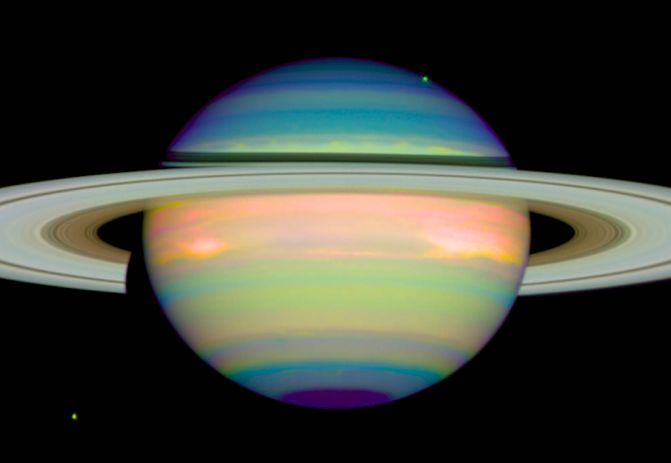Infrared Saturn

Explanation:
This delightfully detailed
false-color
image of Saturn was taken in January 1998 by the
orbiting Hubble Space Telescope.
The picture is a combination of three images from Hubble's
NICMOS instrument and shows the lovely ringed planet in reflected
infrared
sunlight.
Different colors indicated varying heights and compositions of cloud
layers generally thought to consist of ammonia ice crystals.
The eye-catching rings cast a shadow
on
Saturn's upper hemisphere.
The bright stripe seen within the left portion of the shadow
is infrared sunlight streaming through the large
gap
in the rings known
as the
Cassini Division.
Two of
Saturn's many moons have also put in an appearance,
Tethys just
beyond the planet's disk at the upper right, and Dione at the lower left.
Presently, Saturn shines brightly in evening skies as a
pale yellow "star" near the constellation
Orion.
Authors & editors:
Robert Nemiroff
(MTU) &
Jerry Bonnell
(USRA)
NASA Web Site Statements, Warnings,
and Disclaimers
NASA Official: Jay Norris.
Specific
rights apply.
A service of:
LHEA at
NASA /
GSFC
& Michigan Tech. U.

